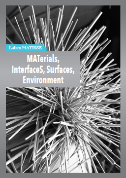Insights into calcite crystals deformation at low temperature
Axe 3 - Interfaces, transport et réactivité
Thèse de Camille parlangeau
Thèse soutenue le 4 décembre 2017.
Laboratoires co-porteurs
- Institut des Sciences de la Terre de Paris (ISTeP)
Porteur de projet : Olivier Lacombe - IFP Energies nouvelles (IFPEN)
Co-encadrants : Sylvie Schueller, Eric Kohler
Projet de recherche
Calcite is a common mineral in the upper crust, forming different types of sedimentary (carbonates) or metamorphic (marbles) rocks. Experimental deformation of rocks allows to determine their rheology under different conditions (pressure, temperature, strain rate …). Deformation processes and related strain are scale dependent concepts. The multi-scale experimental studies allow to determine either the global “homogeneous” rheological behaviour of the material, or to focus on how and where localizes deformation. The data are used to develop rheological models and to predict the structural evolution for sedimentary basins. Therefore, to understand the deformation at large scales (basins for example) it is necessary to study deformations at micro-scales (grains). Deformation modes of calcite aggregates have been investigated experimentally since the early 50’s (Turner, 1949; Griggs and Miller, 1951; Handin and Griggs, 1951; Turner and Ch’ih, 1951; Griggs et al., 1951; Griggs et al., 1953; Friedman and Heard, 1974; Schmid and Paterson, 1977; Rowe and Rutter, 1990; Lacombe and Laurent, 1996; De Bresser and Spiers, 1997; Laurent et al., 2000; Rybacki et al., 2013). These studies provide information about the different mechanisms allowing calcite crystals to accommodate the deformation. E-twinning is the plastic deformation mechanism that prevails in calcite crystals at low strain and low temperature. Strain rate, temperature and isotropic (confining) pressure have negligible effects on twinning activation that is mainly dependent on differential stress. However, temperature has an impact on the thickness of twin lamellae (Burkhard, 1993) and the twin density depends on the differential stress and grain size (Rowe and Rutter, 1990). Twin lamellae are observed to be thin (≤1 µm) under 200°C and become thicker (2-5 µm) above this temperature. However, this assumption has been recently challenged by Rybacki et al. (2013) who emphasize that the increasing duration of stress application – hence strain - may cause widening of twin lamellae even at room temperature. Another matter of debate deals with the existence of a threshold stress for activation of twinning, which is defined as, for crystal slip plasticity, a critical resolved shear stress value (CRSS) (Tullis, 1980; Ferrill, 1998). Several authors have tried to constrain this value (Turner et al., 1954; Lacombe and Laurent, 1996; De Bresser and Spiers, 1997; Laurent et al., 2000; Lacombe, 2001, Rocher et al., 2004; Covey-Crump et al., 2017). The CRSS is mainly dependent on grain size and is subjected to strain hardening: its value increase with the amount of accommodated strain and decreases with increasing grain size (Turner et al., 1954; Tullis, 1980; Rowe & Rutter, 1990; Laurent et al., 2000). This CRSS value may therefore obey the Hall-Petch relation, but due to sparse experimental data, the actual evolution of the CRSS with grain size and strain still remains poorly constrained.
To sum up, most experiments were carried out to date at high temperature to investigate gliding systems in calcite, so just few data are available on the plastic behaviour of calcite crystals at low temperature, despite the ubiquitous deformed carbonate rocks in sedimentary basins.
Publications
- Camille Parlangeau, Olivier Lacombe, Sylvie Schueller, Jean-Marc Daniel
Inversion of calcite twin data for paleostress orientations and magnitudes: A new technique tested and calibrated on numerically-generated and natural data
Tectonophysics, Elsevier, In press, 722, pp.462-485.
DOI : 10.1016/j.tecto.2017.09.023
Ref Hal : hal-01630264v1
Egalement dans la rubrique
- Caractérisation microstructurale multi-échelles de la calcination et de l’hydratation du gypse
- Conception et mise en œuvre de nouveaux systèmes pour la nanofluidique : études expérimentales et théoriques
- Cristallochimie et thermodynamique des phyllosilicates ferriques : étude des chlorites
- Développement de revêtements biocides à base de biotensioactifs : application aux matériaux du patrimoine
- Development of a new generation of electrodes for biofuel cells by direct electron transfer
- Études fondamentales des échanges ioniques au sein d’électrodes nanostructurées
- Influence des propriétés physico-mécaniques de minéraux argileux dans l'altération de la pierre monumentale
- Investigation of the electrochemical properties of Layered Double Hydroxides : in operando advanced analysis of ionic transfer mechanisms
- Synthèse de revêtements anticorrosion par voie sol-gel pour la protection de l’alliage 2024 T3. Caractérisation par spectroscopie d’impédance électrochimique et ellipsométrie in situ
MATISSE en chiffres
- 4 disciplines : Chimie, Physique, Sciences de la Terre, Patrimoine
- 400 permanents
Contact
Direction
Florence Babonneau
Administration
Communication
Emmanuel Sautjeau



